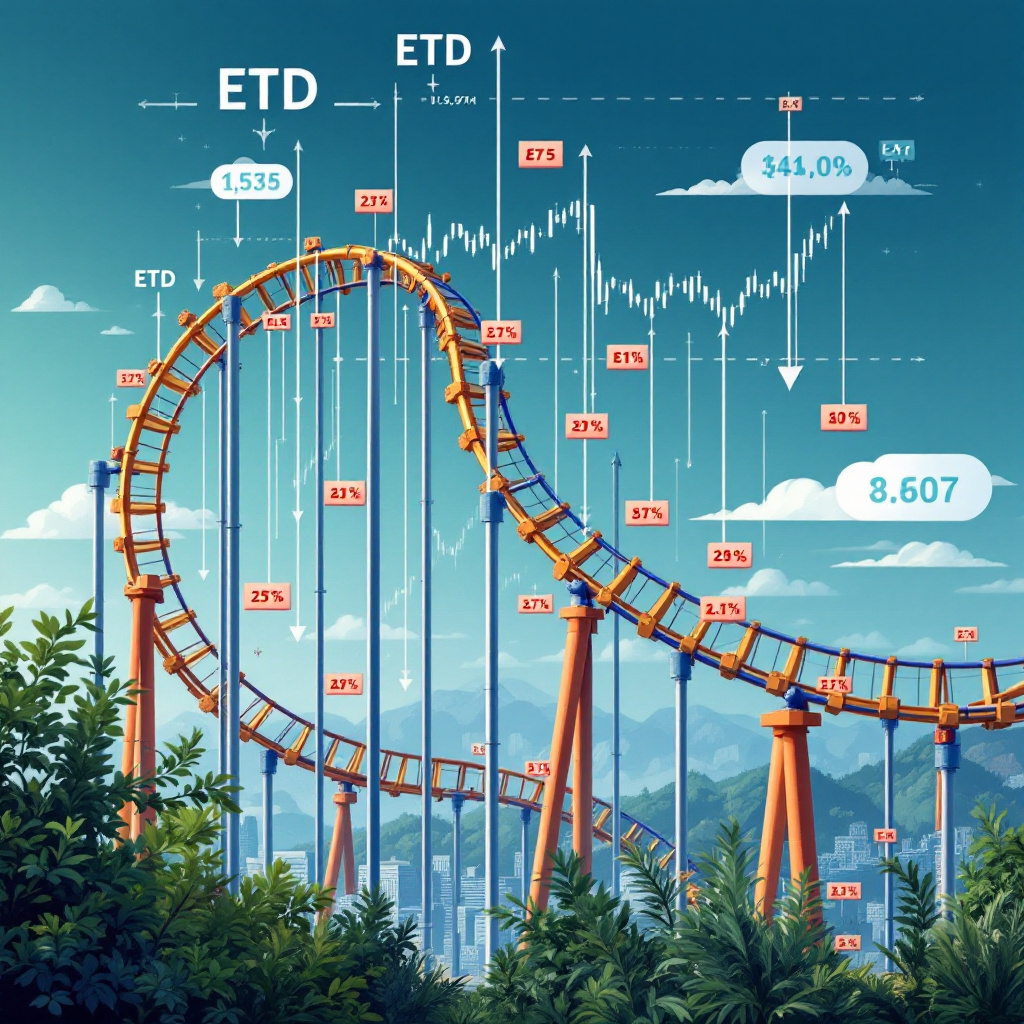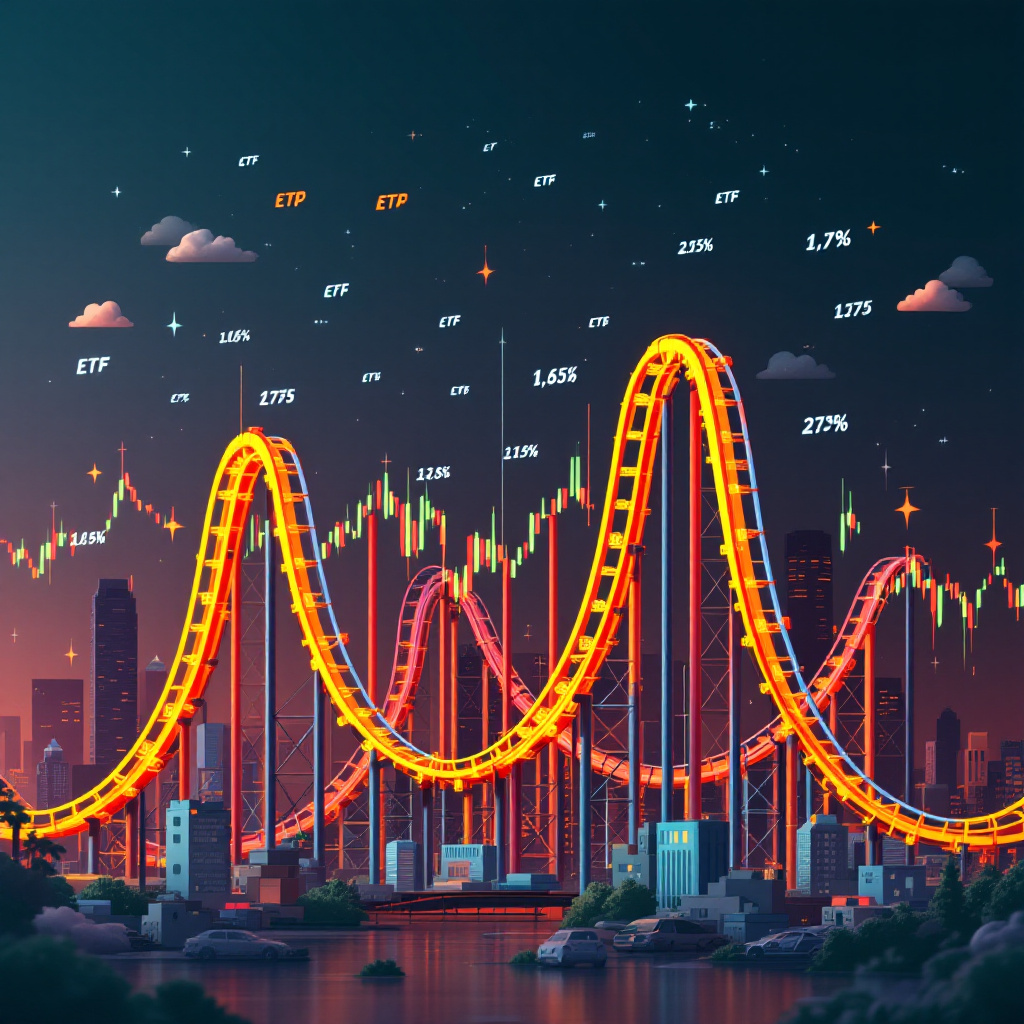The Ripple Effect: Impact of Market Volatility on ETFs
If the financial markets were an ocean, market volatility would be its unpredictable storms. And much like a sailor caught in such a tempest, investors often find themselves navigating through these turbulent market waters, wondering how their ships—Exchange-Traded Funds (ETFs)—will fare. While mutual funds have long been the go-to for many investors, ETFs have emerged as a strong contender, offering distinct advantages and challenges during volatile times. So, grab your compass as we delve into the impact of market volatility on ETFs and explore strategies to keep your investment ship steady.
The Nature of Market Volatility
Market volatility, simply put, is the rate at which the price of a security increases or decreases for a given set of returns. It represents uncertainty and risk in price change. Volatility isn’t just the heart-pumping thrill of investment; it’s the double-edged sword that can slice into your portfolio or present unexpected opportunities.
Volatility is influenced by numerous factors, some of which include:
- Economic Indicators: Interest rates, unemployment rates, and inflation can send shockwaves through the market.
- Geopolitical Events: Wars, elections, and trade disputes can cause rapid shifts in market stability.
- Market Sentiment: Investor emotions, speculative trading, and media influence can drive short-term price fluctuations.

ETFs: The Basics and Their Appeal
Exchange-Traded Funds are unique investment vehicles that combine the characteristics of mutual funds and stocks. ETFs track an index, commodity, bonds, or a basket of assets, much like an index fund. However, they’re traded on stock exchanges, which provides the flexibility to buy and sell throughout the trading day. This liquidity, coupled with transparency and low fees, makes ETFs an attractive choice for investors, especially during periods of market volatility.
Moreover, ETFs allow investors to diversify their portfolios without the hands-on approach required for individual stocks. As a result, they’ve become a pivotal tool in portfolio management, enabling investors to weather the storms of market fluctuations.
Market Volatility’s Impact on ETFs
The impact of market volatility on ETFs can be described as multifaceted, influencing everything from pricing to investor behavior. Let’s break this down:
Pricing Dynamics
Due to their presence on stock exchanges, ETFs are subject to real-time pricing. This means that during volatile times, ETF prices can change rapidly, offering both risks and opportunities. Unlike mutual funds, which are priced at the end of each trading day, ETFs’ intra-day pricing can provide an advantage to savvy investors who are skilled at timing the market.
Liquidity Concerns
While ETFs are generally known for their liquidity, market volatility can skew this balance. During high-stress market conditions, spreads can widen, making it more challenging to buy or sell ETFs without impacting the market price. However, the flexibility to trade throughout the day still provides an edge over mutual funds, which don’t offer this fluidity.
Investor Behavior
Market volatility often triggers a psychological response among investors. Panic selling and defensive maneuvers aren’t uncommon, and these behaviors can exacerbate the situation. While some investors might ditch ETFs in a rush to reduce risk, others might see turbulent times as prime opportunities to acquire assets at a reduced price.
Risk Management and Strategic Considerations
Understanding the relationship between market volatility and ETFs is crucial for effective risk management. Here are some strategies that investors might consider:
- Diversification: Spread investments across various asset classes and sectors. ETFs are inherently diverse, but ensure your portfolio isn’t overly concentrated in a volatile market or sector.
- Keep Emotions in Check: Volatility can trigger fear-based decisions. Adopting a disciplined approach helps in maintaining a long-term perspective.
- Utilize Limit Orders: Set limit orders instead of market orders to control buying and selling prices, particularly in a jittery market.
- Consider Low-Volatility ETFs: As a hedge, consider low-volatility ETFs that aim to reduce the overall risk without substantial return compromises.
Potential Opportunities in Volatility
Despite the received wisdom of Buy low, sell high, market volatility often flips the script for many investors. However, it’s during these turbulent times that opportunities can emerge:
- Bargain Hunting: Temporary dips in the market can present the perfect chance to buy into quality ETFs at a discount.
- Volatility ETFs: Specialized ETFs that track market volatility indices like the VIX can act as insurance, offsetting losses in other areas of your portfolio.
- Rebalancing Act: Volatile periods provide a good reason to reassess your portfolio. Adjusting your asset allocation can safeguard against potential market dips.
ETFs vs. Mutual Funds in Volatile Climates
Before closing our sails, it’s worth comparing how ETFs hold up against their more traditional counterpart, mutual funds, during market upheaval.
Mutual Funds: Generally priced once at the end of the trading day, mutual funds don’t offer the same flexibility as ETFs. When the market goes topsy-turvy, this feature can be both a blessing and a curse—investors are shielded from real-time emotional trading but lack the agility to act on sudden opportunities.
ETFs: Their transparency and ability to be traded like stocks render them appealing, especially during high volatility. However, the need for astute decision-making is elevated, given the swift price movements and potential for larger spreads.
Conclusion
The impact of market volatility on ETFs can best be likened to a stress test for investments—one that challenges yet reveals resilience. While ETFs provide numerous advantages, their performance in turbulent times requires careful navigation. With a well-rounded understanding of how volatility influences ETF dynamics and employing strategic risk management, investors can turn potential pitfalls into opportunities.
So, as the tides of market volatility ebb and flow, remember: like any voyage worth setting out on, it’s less about avoiding the storm and more about sailing through it with wisdom and courage. Happy investing!
FAQs
Do ETFs increase market volatility?
The arrival of liquidity shocks in the ETF market can add a new layer of non-fundamental volatility to the prices of the basket securities. As a consequence, the total volatility of the underlying securities can increase due to ETF ownership. However, it’s important to remember that while ETFs might contribute to volatility under certain conditions, they also provide liquidity and price discovery, which can stabilize markets at other times.
What is the effect of market volatility?
In the stock market, increased volatility is often a sign of fear and uncertainty among investors. This is why the VIX volatility index is sometimes called the “fear index.” At the same time, volatility can create opportunities for day traders to enter and exit positions, allowing for potentially substantial gains, albeit with increased risk. For long-term investors, volatility may necessitate a review and adjustment of their investment strategy.
Why are ETFs so volatile?
Myth 1: ETFs are volatile because they are traded throughout the day. Reality: While ETFs offer real-time pricing, this transparency doesn’t inherently make them more volatile. The price of an ETF reflects the changing value of its underlying securities and the supply and demand dynamics of the ETF in the marketplace. Thus, the perceived volatility is often a reflection of the inherent volatility in the underlying assets.
How can investors manage ETF investments during volatile markets?
Managing ETF investments during volatile markets involves a few strategic approaches. Diversification across various sectors and asset classes can mitigate risk. Investors should also stay disciplined, avoiding emotional trading decisions. Using limit orders, rather than market orders, can help control entry and exit prices. Additionally, considering low-volatility ETFs or hedging strategies like volatility ETFs could protect the portfolio from significant swings.

